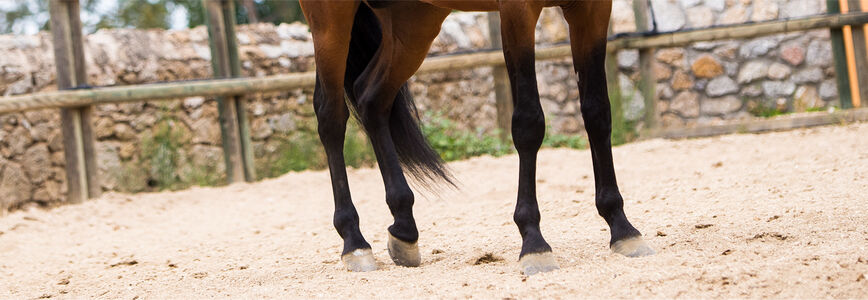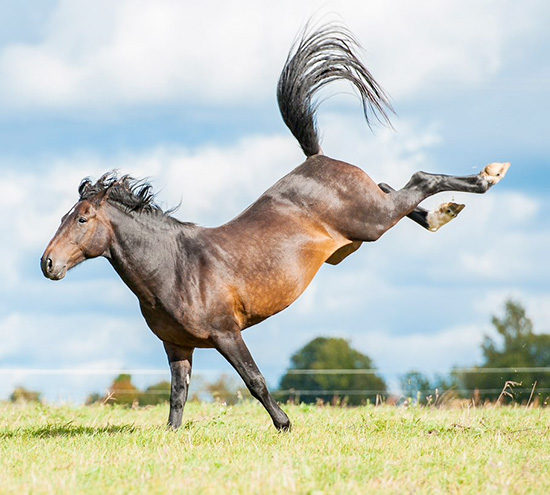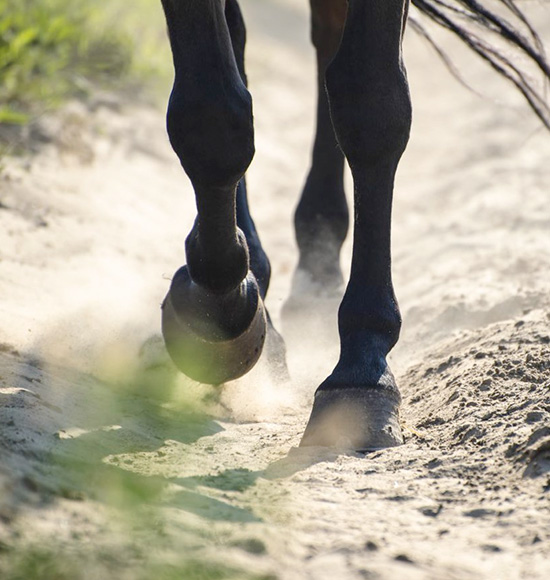
With the position of their legs, horses not only express themselves, but they also serve as a defence. Find out here what the legs of horses reveal about the animals.

The position of the horse's legs can reveal a lot about the animal's state of mind.
The best-known form of communication through the legs is probably the somewhat strange-looking resting position of horses, which includes a certain posture of one hind leg: In the relief position, one of the hind legs is placed on the front edge of the hoof, with the hoof joint (see anatomy) bending forward. Thus the leg no longer takes a load and can relax. However, horses also assume this position when they have an injury to one of the hind legs, so you need to pay attention to whether the horse may be unloading more often than is actually normal.
Care should be taken if one of the hind legs is lifted quickly and specifically aimed backwards or to the side. This threatens the horse with a kick, which it will carry out if it continues to be displeased. The hindquarters are the most dangerous defence mechanism of animals and should be avoided at all costs.
If a horse stamps loudly on the ground with one front leg or hits the air or even a wall with it, this is a sign of impatience or even anger. In stallions, this gesture is part of the impertinence towards mares, which is also the origin of the impressive Spanish walk as a dressage lesson.

Horses with an optimal conformation have approximately symmetrical legs. This means that - when viewed from the front - an imaginary line can be drawn from the top centre of the leg at chest level, across the forearm, knee and pastern to the middle underside of the hoof.
Looking at the hind leg, the imaginary line runs from the back of the hind end along the back of the lower leg, hock and pastern to the pads. Looking laterally, the straight line runs from the back of the rump down and touches the back of the hock and hock leg and fetlock joint. A horse with optimal leg angles puts less stress on its joints and the legs are better able to absorb the shock of each hoof "hitting" the ground.
Because a horse's legs are made up of a finely tuned system of bones and joints, ligaments and tendons, muscles and connective tissue designed to carry a relatively heavy body, good body conformation combined with healthy limbs is extremely important for proper function.
If there are problems with the horse's leg, in about 60% of cases the front legs go lame. In about 95% of cases, the noble quadruped is lame from the knee down, with the feet often causing the most problems. In about 20 % of cases, the hind legs are affected, with the hock and knee joints being the main problem areas.